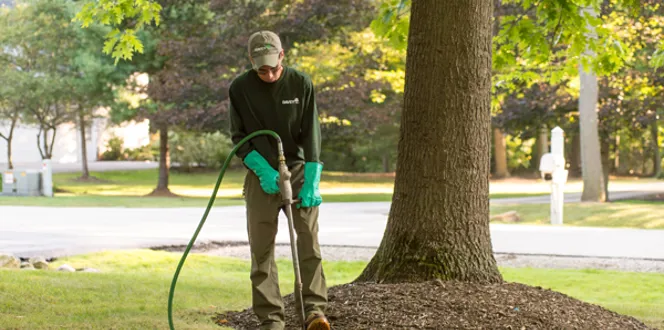Thinking about planting a garden? There’s inspiration everywhere! From magazines to Pinterest pictures and even your neighbor’s front yard, checking out the gorgeous gardens around you can really help get the creative juices flowing.
When you’re ready to bring that inspiration to life, this blog post has you covered. Keep reading for all the flower gardening tips and tricks you’ll need for your DIY flower bed.
The best plants for flower beds
Plant options are endless when you’re starting up a flower bed, which can be both exciting and challenging. On the one hand, having an array of flowers to choose from means you’ll get exactly what you want. However, searching for the right plants can be overwhelming. Should you go with elegant hydrangeas or showy rhododendrons? What about the ever-popular mums?
You can narrow down your options by reading up on planting zones and growing conditions for flowers you like and then choosing ones that work best for your yard.
What flowers bloom all year?
Looking for blooms that provide longer color displays? Try these flowers:
- Chrysanthemums or “mums” (zones 5-9): Sun-loving plants that require frequent watering.
- Asters (zones 3-10): These plants crave cool, moist summer conditions and full sun exposure.
- Geraniums (zones 9-11): They prefer a sunny location and soil that’s stocked with organic matter.
Best perennial flowers
The joy of planting perennials is having a staple look for your flower garden year after year. Some popular perennials that come back every growing season are:
- Rhododendrons (zones 4-8): They grow best in slightly filtered sunlight and acidic soil.
- Coneflowers (zones 5-8): Drought-tolerant plants that grow in a variety of soil conditions.
- Hostas (zones 3-9): These plants can grow in low shade, and they require little maintenance.
- Hydrangeas (zones 4-9): They need well-drained soil and regular watering.
- Pansies (zones 6-11): These plants need partial shade, and they don’t grow well in summer’s heat.
Best annual flowers
Annuals bring a fresh look to flower gardens with every new growing season. For beautiful blooms that you can switch out every year, read about some popular annual flowers here.
How to arrange a flower bed
The trick to creating a vibrant and inviting flower bed is: planning. Read these flower bed tips before you get started.
- Brainstorm color schemes, and decide on two or three garden colors. If you’re not quite sure what tones to choose, use a color wheel as a cheat sheet. Colors that are next to each other or across from each other work well together.
- Think about height. Most flower gardens are tiered, with the tallest plants in the back and the shortest ones up front. Also, try this out: plant annuals in the front so they’re easier to remove and replace each new growing season.
- Variety is your friend! Mix annuals with perennials and greenery with color.
How to group flowers in a bed
Designing a flower bed that’s aesthetically pleasing is all about the right groupings. Install your plants in groups of 3 or 5 –odd numbers create the best look! And, group flowers based on bloom times. If you use flowers that bloom during different seasons, no areas will lack color when a particular plant is done blooming for the year.
How to prepare and plant flowers
OK, you’ve got a vision, now bring it to life! To prep your flower garden:
- Scope out a spot with the right amount of sun or shade for your plants
- Pull up weeds or grass
- Get the soil ready for planting (more on that below)
What to add to garden soil before planting
Planting flowers in good soil is an absolute must if you want them to thrive. But what exactly does “good” mean? The answer is in a soil test!
Soil tests tell you what nutrients are in the soil, the pH level, and the amount of organic matter. All that affects flower growth.
Test results will help you determine what amendments or nutrients are needed for the soil before starting a garden. For example, say you have your heart set on rhododendrons. They thrive in moist, well-drained, acidic soil (meaning, soil with a pH level under 7). A test will tell you whether or not your soil makes the cut before you spend the time and money planting the flowers. With a test, you’ll know what to add to your soil to get it to the right place.
Here’s how to perform a soil test. And then...







